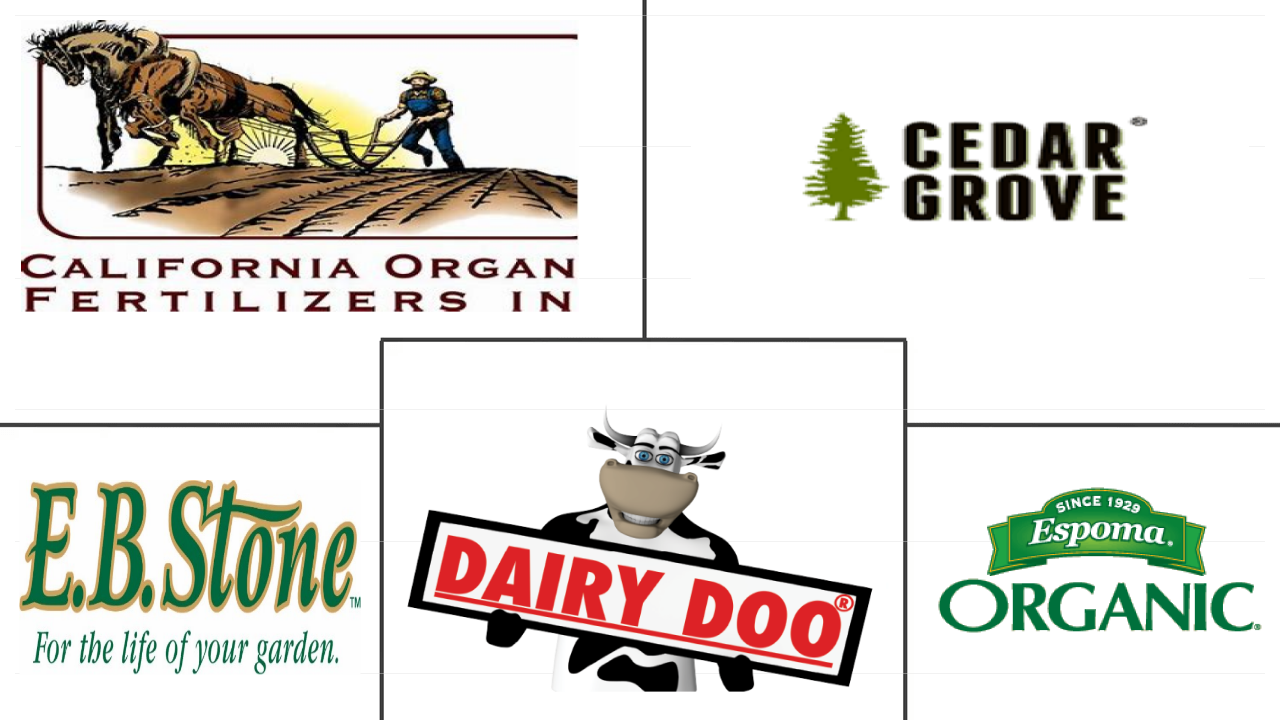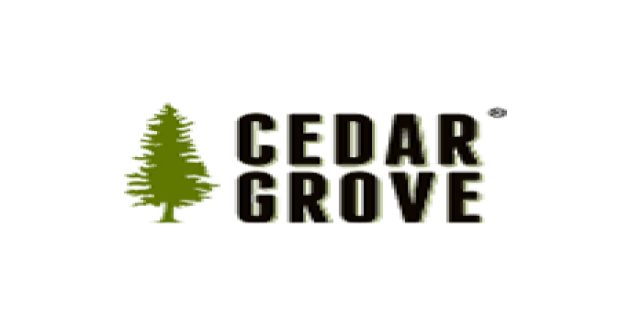Market Size of united states organic fertilizer Industry
|
|
Study Period | 2017 - 2029 |
|
|
Market Size (2024) | USD 354.22 Million |
|
|
Market Size (2029) | USD 630.92 Million |
|
|
Largest Share by Form | Manure |
|
|
CAGR (2024 - 2029) | 12.24 % |
|
|
Fastest Growing by Form | Manure |
Major Players |
||

|
||
|
*Disclaimer: Major Players sorted in no particular order |
United States Organic Fertilizer Market Analysis
The United States Organic Fertilizer Market size is estimated at 354.22 million USD in 2024, and is expected to reach 630.92 million USD by 2029, growing at a CAGR of 12.24% during the forecast period (2024-2029).
354.22 Million
Market Size in 2024 (USD)
630.92 Million
Market Size in 2029 (USD)
9.54 %
CAGR (2017-2023)
12.24 %
CAGR (2024-2029)
Largest by Form
46.66 %
value share, Manure, 2023
Manures are the most consumed organic fertilizer in the United States and accounted for a maximum share of 46.7% in the year 2022, due to their higher availability.
Fastest by Form
12.49 %
Projected CAGR, Manure, 2024-2029
Manure can be applied in both organic and non-organic farms to improve the physio-chemical properties of the soil at different growth stages of the crop's life cycle.
Largest by Crop Type
65.90 %
value share, Row Crops, 2023
The organic area under the cultivation of field crops stood at 6.23 lakh hectares in the year 2021 accounting for 71.7% of the total organic area in the country.
Fastest by Crop Type
12.53 %
Projected CAGR, Row Crops, 2024-2029
Major row crops cultivated in the United States include maize, rice, wheat, and barley. Manures are most consumed by the row crops, accounting for a share of 19.1% in 2022.
Leading Market Player
10.64 %
market share, Cedar Grove Composting Inc., 2022

The company offers over 70 natural products, and manufactures around 50.0 million pounds of fertilizers annually with wide distribution network across the country.
- Manures are the most consumed organic fertilizer in the United States, accounting for a maximum share of 46.7% in 2022. Manures can be of plant or animal origin or a decomposed form of plant or animal waste like excreta, which is generally rich in organic matter. Animal or plant waste compost manure, farmyard manure, and green manure are the common types used in agriculture.
- The application of manure fertilizers is generally observed in organic and non-organic farms. It is known to increase organic matter and carbon content in the soil, which would increase the nutrient uptake of the crop and, thus, the grain yield.
- The other organic fertilizers include fish guano, bat guano, fish emulsion, vermicompost, and molasses and are the second most consumed organic fertilizers, accounting for a share of 11.9% in 2021. Despite the rich nutrient properties, other organic fertilizers are less commonly used than manures due to their higher prices, which is slightly hindering the market. However, the demand may increase with the increasing affordability of farmers.
- The demand for meal-based fertilizers majorly comes from certified organic growers and farms under organic conversion. The United States is the largest producer of beef in the world, which accounted for around 20.44% in 2020. This indicates the higher scope for meal-based fertilizer production in the country, leading to easy availability and accessibility for organic farmers.
- The US oilcake market was valued at USD 2.1 million in 2022, with a volume consumption of 5,669.9 metric tons in the same year. Oilcake is a rich source of organic nutrients containing 2.0-8.0% nitrogen, 0-2.0% phosphorous, and 0-2.0% potassium content.
United States Organic Fertilizer Industry Segmentation
Manure, Meal Based Fertilizers, Oilcakes are covered as segments by Form. Cash Crops, Horticultural Crops, Row Crops are covered as segments by Crop Type.
- Manures are the most consumed organic fertilizer in the United States, accounting for a maximum share of 46.7% in 2022. Manures can be of plant or animal origin or a decomposed form of plant or animal waste like excreta, which is generally rich in organic matter. Animal or plant waste compost manure, farmyard manure, and green manure are the common types used in agriculture.
- The application of manure fertilizers is generally observed in organic and non-organic farms. It is known to increase organic matter and carbon content in the soil, which would increase the nutrient uptake of the crop and, thus, the grain yield.
- The other organic fertilizers include fish guano, bat guano, fish emulsion, vermicompost, and molasses and are the second most consumed organic fertilizers, accounting for a share of 11.9% in 2021. Despite the rich nutrient properties, other organic fertilizers are less commonly used than manures due to their higher prices, which is slightly hindering the market. However, the demand may increase with the increasing affordability of farmers.
- The demand for meal-based fertilizers majorly comes from certified organic growers and farms under organic conversion. The United States is the largest producer of beef in the world, which accounted for around 20.44% in 2020. This indicates the higher scope for meal-based fertilizer production in the country, leading to easy availability and accessibility for organic farmers.
- The US oilcake market was valued at USD 2.1 million in 2022, with a volume consumption of 5,669.9 metric tons in the same year. Oilcake is a rich source of organic nutrients containing 2.0-8.0% nitrogen, 0-2.0% phosphorous, and 0-2.0% potassium content.
| Form | |
| Manure | |
| Meal Based Fertilizers | |
| Oilcakes | |
| Other Organic Fertilizer |
| Crop Type | |
| Cash Crops | |
| Horticultural Crops | |
| Row Crops |
United States Organic Fertilizer Market Size Summary
The United States organic fertilizer market is experiencing significant growth, driven by increasing consumer demand for organic products and the expansion of organic farming practices. Manures, both plant and animal-based, dominate the market due to their rich organic matter content, which enhances soil nutrient uptake and crop yield. Other organic fertilizers, such as fish guano and vermicompost, are also used but are less prevalent due to higher costs. The market is supported by the country's status as a leading producer of beef, facilitating the availability of meal-based fertilizers. The organic agriculture sector has seen substantial growth over the past two decades, supported by favorable laws and regulations, with California and Pennsylvania leading in the number of certified organic farms.
The demand for organic products in the United States is robust, with organic fresh fruits and vegetables being the most popular categories. The country's per capita spending on organic products is the highest in North America, reflecting a growing preference for organic foods among consumers, particularly younger and higher-income individuals. This trend is creating opportunities for organic producers to access high-value markets both domestically and internationally. Despite the fragmented nature of the organic fertilizer market, with major players like California Organic Fertilizers Inc. and The Espoma Company, the industry continues to expand, supported by investments in production facilities and increased consumer awareness of the benefits of organic products.
United States Organic Fertilizer Market Size - Table of Contents
-
1. MARKET SEGMENTATION (includes market size in Value in USD and Volume, Forecasts up to 2029 and analysis of growth prospects)
-
1.1 Form
-
1.1.1 Manure
-
1.1.2 Meal Based Fertilizers
-
1.1.3 Oilcakes
-
1.1.4 Other Organic Fertilizer
-
-
1.2 Crop Type
-
1.2.1 Cash Crops
-
1.2.2 Horticultural Crops
-
1.2.3 Row Crops
-
-
United States Organic Fertilizer Market Size FAQs
How big is the United States Organic Fertilizer Market?
The United States Organic Fertilizer Market size is expected to reach USD 354.22 million in 2024 and grow at a CAGR of 12.24% to reach USD 630.92 million by 2029.
What is the current United States Organic Fertilizer Market size?
In 2024, the United States Organic Fertilizer Market size is expected to reach USD 354.22 million.

